I’ve been asked about the inspiration behind Suitcase of Dreams. As you know the book is inspired by my grandmother’s stories of life in Australia as a migrant in the 1950s. I wanted Suitcase of Dreams to feel authentic to the migrant experience of the 1950s and 60s and many of the events in the book actually happened to my grandparents. Here’s a little snap-shot of life through their eyes, a few photos of that trip to Australia and the early days in Sydney.

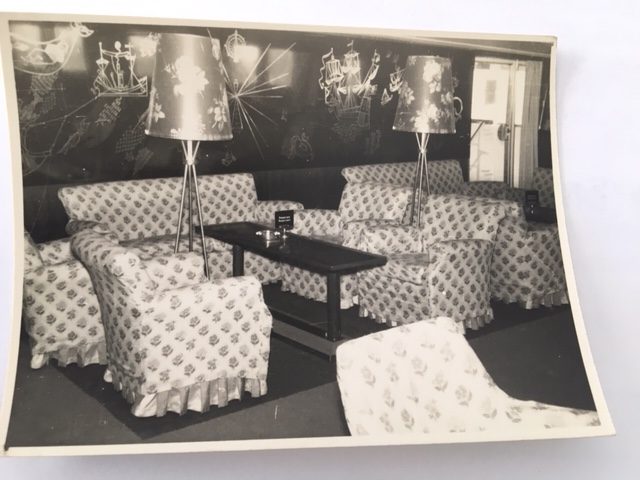
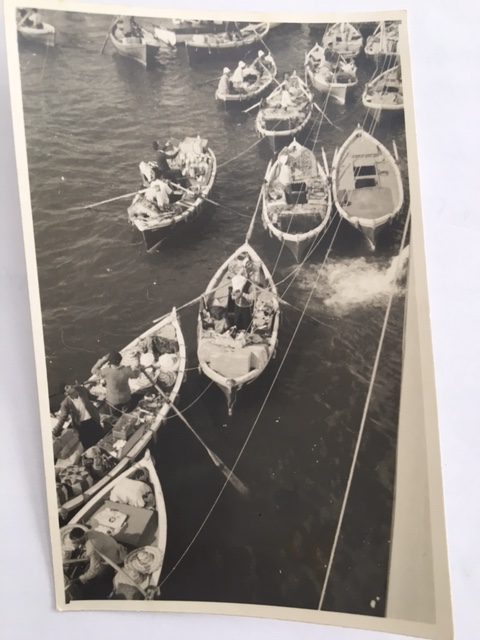
The Skaubryn and it’s luxurious lounge. The hawkers’ boats off the Skaubryn at Port Said.
My grandparents did arrive from Germany on the Skaubryn in 1956. They docked in Fremantle before disembarking in Melbourne and taking the train to the Bonegilla migrant camp, near Albury on the Victorian/New South Wales border. My grandfather was an aeronautic engineer and promised work in Australia but like so many educated and professional migrants, he found out that his qualifications weren’t recognised once he arrived. He travelled up to Sydney to find work and my grandmother and the children later joined him in the Villawood hostel where they stayed for about nine months. He worked as a mechanic and in factories, including the disastrous stint with the engineering firm and my grandmother did work in a textiles factory.
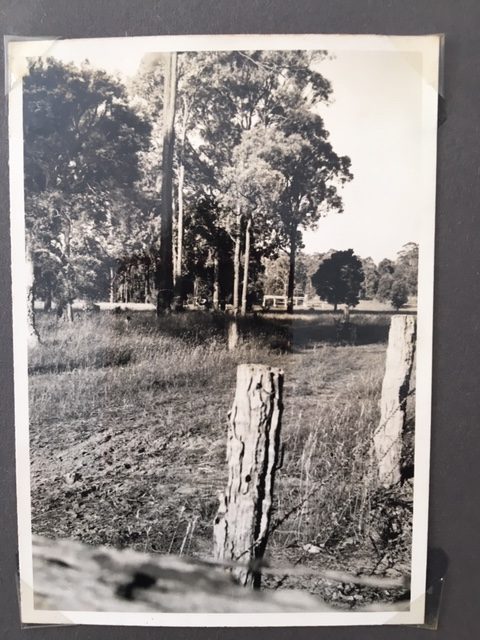
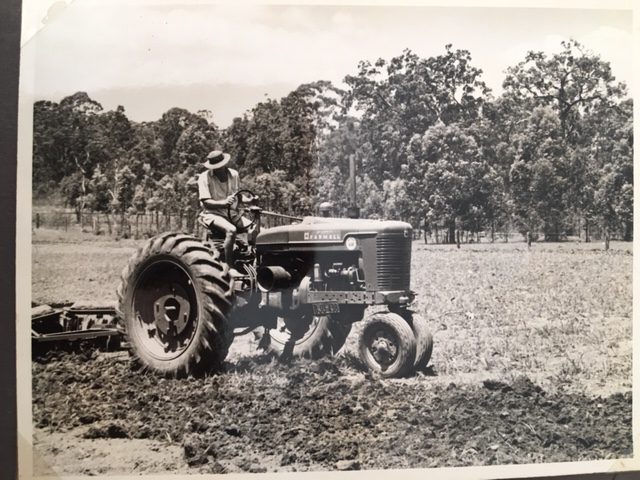
The ‘Australian Dream’! This was the farm at Leppington where they built the garage and which they called home for some years.
My grandmother was European trained but worked for the first time as a photographer in Australia. She began painting while at the Abercrombie River. She loved the Australian bush, the plants, the animals and the landscapes. She was a talented painter and I have some of her works on my walls at home.
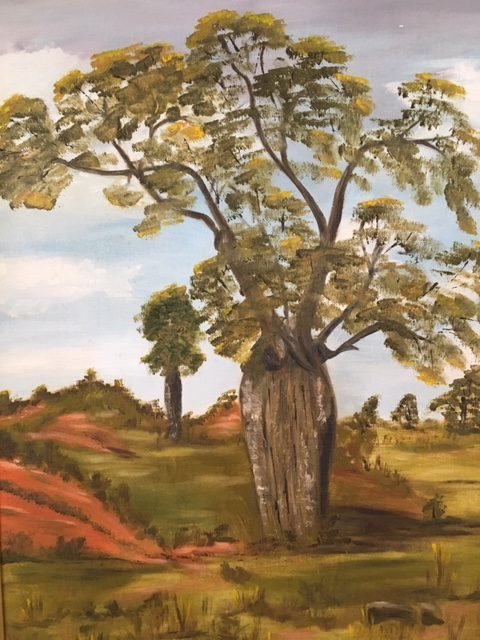
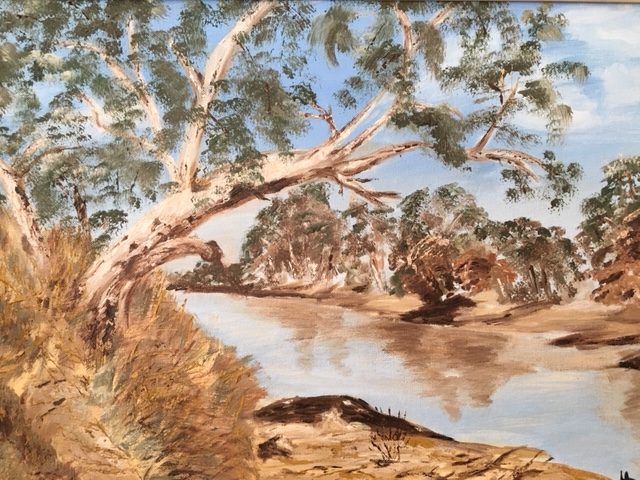
A couple of my grandmother’s paintings.
My grandfather started up his own business but although his father had a furniture shop in Germany and my grandfather could do woodwork, he turned his hand not to furniture making but to taxidermy – a specialised craft he had seen as a young man surrounded by the mountains and forests of his youth. He learnt the art from scratch and built up a successful business.
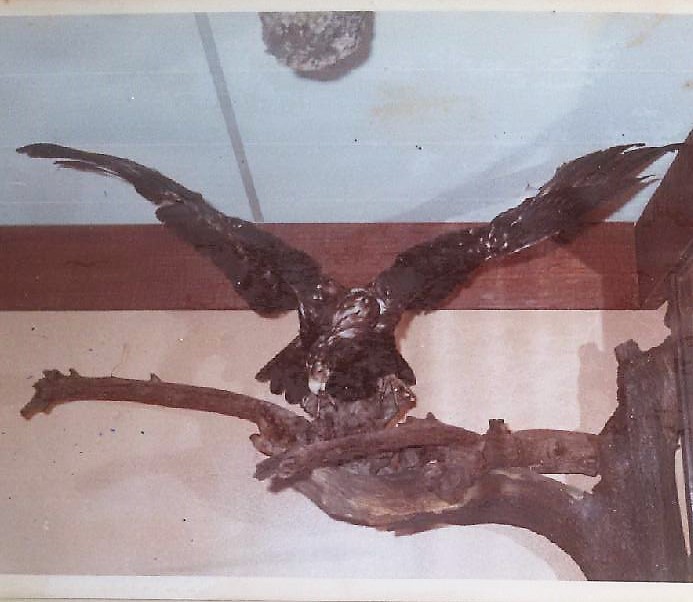
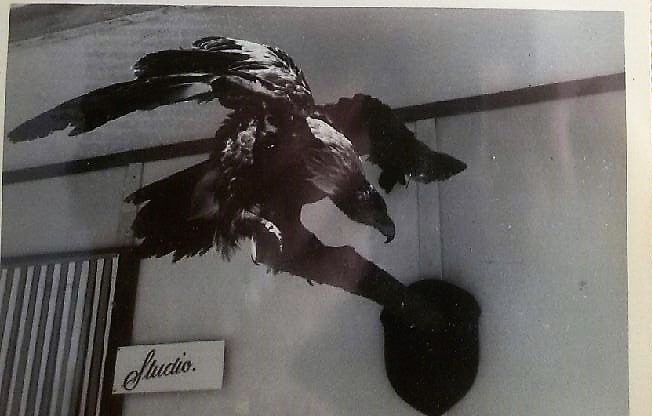
One of the birds my grandfather did.
Although I had such great facts to work with, what intrigued me were the reactions to this vastly different country they’d arrived in – in climate, geography and culture. And this was where my grandfather’s journal became invaluable. Here’s a little snippet of his first impressions of Australia – when they were travelling from Melbourne where they disembarked, up to Bonegilla. He describes the camp, the Australian countryside and his first impressions. This is a translation from German.
We drove through the Australian landscape and it was picturesque. Unforgettable sheep and cattle herds – now and then a small town – and everywhere hilly terrain with individual eucalyptus trees and dams filled with water. It is an impressive picture but similar enough to our country. After a 6-hour train journey we arrived at a stop – it was Bonegilla. Now we got off and were driven by bus for about 5 minutes to the camp.
We assembled in a large theatre where we were assigned our rooms. Then we were driven to the individual blocks by bus. Each block contains about 20 barracks and is like a small village with kitchen, laundry, shower room, etc. Each barrack has 10 small rooms and each room has its own entrance from the outside. From the outside the barracks are covered with corrugated iron, and on the inside they are boarded with hardboard. In each room there is a camp bed with 1 locker, 1 table, 1 armchair, 1 wardrobe with 4 drawers, 1 small carpet. We have 2 rooms, one for us and one for the children.
Now we have our room quite comfortably equipped with tablecloth, pictures and flowers, so we think it is like home. The camp is huge and can accommodate 10-12,000 people. The camp is hilly with trees and bushes planted and very beautiful flower plants available. A large reservoir is located here and you can go swimming and motor boating on the beach. The mountains are about 100-200 m high, a 15 minute walk away. Behind the mountains lie the Australia Alps which you can see well and are still snow-covered. It is Scenic, simply beautiful and very varied. Here you will find everything you find at home only much more beautiful and big in the colour and splendour. The geranium bushes are about 1m high and 1m diameter. The asters grow wild everywhere in the most beautiful colours. Here, our children can also see the first lemon trees, on which ripe lemons hang. The animals are just like home, the sparrows and swallows are sitting on our roofs, cats and dogs walk around, budgerigars and cranes and more. Yesterday we had visits of Opossums – animals are as big as a grown cat, but like a little bear – charming and tame. They came to the roof of our barrack and begged for bread with marmalade.
The first two nights we were pretty frozen and I immediately bought a small electric heater. During the day the temperature in the room is 32 and outside 41 degrees celsius. At night the temperature drops to 12 degrees celsius. We like the climate well and hope that we do not mind if it gets even hotter in the summer. Each block is about 10 minutes away from each other and the camp has an extent of about 5 km 2. Here are available: cinema, theater, canteen, school, churches, kindergarten, hospital etc. The food is good and plentiful. Through loudspeakers one is called to the individual offices to do all formalities. Investigations and x-ray, English test, and employment office.
This little window into my grandfather’s thoughts and personality was very special to me. Not only did I better understand his experiences but I also learnt so much more about him. Even down to his strangely familiar writing style – it’s just like mine!
I hope you’ve enjoyed a little insight into the treasures that enabled me to gain a better understanding and appreciation of what migrants of the 1950s went through. They were invaluable sources that inspired me to write Suitcase of Dreams in a way that was both authentic and personal.

Hi Tania,
Wow!!! Your writing had me totally immersed in your families story. I was so moved by their resilience, commitment to each other and cried and smiled through both books! Your writing really captured me and I feel so honoured to have been given a glimpse of their lives. What perseverance and love they had through all their struggles, and honesty too! Loved seeing these pictures and snippets too, was very keen to see photos.
Bless you in your writing,
Laura
Hi Laura, Thanks for your lovely comments. I’m really glad you enjoyed both books. I think many migrants of that time had similar stories. It was my privilege to be able to share my grandparents’ story in this way and give a little snap shot of the real life experiences they had.
All the best, Tania
Hello! Thank you, my Oma also docked in Freo and migrated to Sydney with my Opa and my two aunties in 1960 in the Castle Felice.
I am so excited to read your books and have just started ‘Girl from Munich’
My Opa never liked to speak of the hard times in Germany and my Oma was just a little girl. She died last year and although we have some of her stories on tape, I never really felt like I could delve deep enough so it’s great to be able to read your books.
Emily
Hi Emily. I always love to hear other people’s stories.It’s amazing how many are similar to my own. I know what you mean about our grandparents’ generation not talking much about the ‘tough’ times. You must really treasure those stories she gave you on tape. Very precious!
I wish my grandmother would have told me more. If she was here today, I’d have a million more questions for her. Luckily for me, she left behind all her mementos so I was able to get a sense of what life had been like and read between the stories that she did tell. I hope that by reading The Girl from Munich and Suitcase of Dreams that you’ll get some kind of insight into the world your grandparents lived in and maybe even the life they may have lived. Hope you enjoy the stories. All the best. Tania
Hi Tania.
Reading your novel The Girl from Munich and absolutely loving the story. I cannot put the book down.
My parents were migrants to Australia in the 1950’s and were at the Bonegilla camp too.
I am looking forward to your next novel and saw that you are writing a new book as well. Is that a continuation of Lotte’s story?
Hi Liz, Thank you for your lovely comments. I’m really glad that you’re enjoying the book. I hope you enjoy Suitcase of Dreams as well. It’s amazing how many people have told me that they had family at Bonegilla. Lots of common experiences I think! I guess we’re all very lucky that they made the brave decision to come to Australia. I’m busy writing away on the next book. It’s set in Germany in WW2 again but it tells the story of a family where the father is German but his wife is a Russian Jew and they have a ‘half-Jewish’ son. It follows what happens to them through the war years and after. I’m really enjoying writing this one, lots of action and emotional highs and lows, twists and turns. So no it doesn’t follow Lotte’s story. Her story is done now. However this book is inspired by the life of a family member of my grandmother’s (Lotte is inspired by her life). All the best, Tania
Hi Tania,
My Oma and Opa, and my mum and her three siblings arrived in Melbourne in 1951. Also on the Skaubryn! I have many of my Opas stories on tape and also my Uncle Lou, who remembers fleeing to Austria, it’s amazing to hear. I have always thought I should write, maybe I’ll start with Omas recipes.
Hi Jo,
Thanks for your lovely comments. It’s amazing to hear from people with such similar stories! It sounds like the Skaubryn was a wonderful boat and those on it had such great memories. Such a shame that it sank. So amazing that you have your Opa’s stories and your Uncle Lou’s on tape – a real treasure! I would recommend that you write their stories if you have the inclination. It’s a great way of getting to know their story and the world they lived in better and brings a whole new level of appreciation for what they went through. Even if you do it for yourself and your family to start and see where it goes. People love stories from that time. But I absolutely love the idea of your Oma’s recipes. I wish I had more of my Oma’s recipes. She shared some with me but not the really iconic German dishes that I remember her cooking for me. I’d definitely buy a book of Oma’s recipies!! I think a lot of people are trying to capture parts of their heritage and culture that are beginning to disappear with that generation. So good luck with it all! I wish you all the best. Tania
Hi Tania
I have just finished both your books. I feel so much better informed about the flip side of the war and how Germany & WW2 affected life for Lotte something I had never considered.
Loved your stories especially as they were based on your own family and factual.
Please inform me. You don’t mention Giselle in the stories. Which of the girls is your mum?
I would love to know a little more of how life panned out for the Greta etc
Congrats on your success I have passed the Girl from Munich on to many of my friends who have also enjoyed it immensely
Regards
Narelle
Hi Narelle, Thank you so much for your message. So pleased you enjoyed both books and the perspective of WW2 from the German point of view. There’s nothing better than word of mouth so thank you for your recommendation to your friends.
Much of the story of the girls after they’ve left school in Suitcase of Dreams is fictional as it is so close to home and I didn’t want to encroach on my mother and my aunt’s privacy. My mother is Johanna in the story. Both she and my aunt are living in Australia but have been back to Germany on occasion to visit family members.
All the very best,
Tania
Hi Tanya,
I loved reading both your books although i read them in the the wrong order as i wasn’t aware there were two at the time. It didn’t really matter as I read them a few years apart. I really liked reading about th e German perspective of t he war as i had previously read two books about the war camps.
When is by our next book out and what is t he title?
Hi Liz,
I’m really glad you enjoyed both books and that you enjoyed the German perspective of WW2. It’s not something we come across too often. If you like stories about war camps, then I think you’ll enjoy my next book. It’s called ‘Letters from Berlin’ and is about a mixed German/Jewish family living near Berlin during WW2 and during the Soviet years after. I’ve loved writing this book because it provides a different perspective again, especially in regards to what this family goes through. Lots of ups and downs that’s for sure! It should be released later in 2020.
All the best,
Tania
I have almost finished Suitcase of Dreams and can identify with so much in the story. I immigrated in 1954 to Fremantle from Holland with my Mum, Dad and 3 brothers. I admire the sacrifice they made for us and appreciate the hardships faced with finding work, accomodation, the language and racism, which may have been worse in WA as it was new to immigration. For me this book reached to the core. I look forward to your further readings. Thank you Tania.
Hi Elisabeth. Thank you for your lovely message. I’m so glad that you enjoyed Suitcase of Dreams and that you found the story so relatable. It’s amazing how similar your story is to mine and so many other families and to think that many people went through almost the same experiences. I can imagine that WA would have been a tough place to live back then. Thank you so much for sharing your story with me. Take care and all the best. Tania
I was intrigued to read your books as my Mum is German and lived through WW2 in Germany. I have written down some of her memories but with dementia, she has forgotten most of her former life.
Thankyou for sharing your family stories. Those were difficult times and split many families apart. My mum was fleeing Schneidermuhl with her parents and was at the Anhalterbahnhof a few days before it was bombed. Lucky for me they had moved on . My mum slipped from the East of Berlin to the west on a platform ticket and then was a political refugee for a few years in West Berlin. She flew from Berlin north and then spent time in England before migrating to NZ. My Mum met an Englishman on the voyage to NZ in 1957. He became my Dad.
I have yet to read your second novel but believe that there were similar prejudices in NZ towards German immigrants. My Mum was careful that we grew up as New Zealanders and it’s only since I’ve started researching our Ancestry that I have a better understanding of her beliefs and reasons for not teaching us german as children.
I have found your books hard to put down We are in Lockdown 3 again in Auckland which has given me the excuse to read The Girl from Munich without interruption. I read your 3rd book over Christmas time.
Thankyou. I look forward to reading Suitcase of Dreams.
Hi Sally. I apologise for replying only now. I’ve only just come across your comment. Thank you so much for your lovely message and thank you for sharing your fascinating family story. I love hearing from readers about their own stories. It’s great that you’ve written down what you can. Perhaps like me you can join some of the dots with a bit of research. It’s so sad when these wonderful stories become lost. I wish I’d asked my grandmother so much more. I’m very glad you enjoyed The Girl from Munich and Letters from Berlin. I hope you enjoy Suitcase of Dreams too. Take Care, Tania
Hello Tania – I remember we were both at Fiona’s Masterclass in Adelaide in 2015 and what an inspiration your story was back then. I remember you had so much information about the war, your grandparents etc. – no surprise it was a best seller – congratulations! I’ve had a copy since it was published -only just started reading it. My husband who is NOT a reader of fiction has started and is genuinely enjoying it. I think it must be the subject matter and that you’ve drawn from real life as we ll know, a good writer of fiction does exactly that!
My inspiration and enthusiasm rises and falls – I may never write that best seller but always good to hear of those who do and who I know.
I am having a bit of trouble buying Suitcase of Dreams but I’ll persevere. All the best
Best wishes
Janice Taylor – Conder ACT